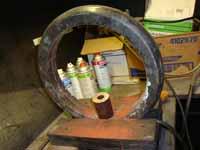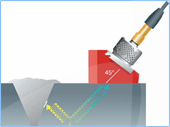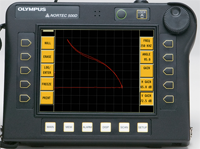NDT Inspection of Forged Parts in Manufacturing
Forged parts have always been a preferred choice for high strength applications. A component manufactured by forging is usually stronger than its casting or machined counterpart. To ensure the required integrity and metal composition, manufacturers use NDT inspection methods. Anyone looking forward to starting a career in this field can opt for NDT inspection training and get started.
Forged parts, being among the strongest ones, require thorough testing at the time of manufacturing, to ensure the desired strength. Sometimes, testers use multiple inspection methods as one method may not be enough to locate all the flaws.
Visual inspection
Surface anomalies are common in forged products and can be easily identified using the visual inspection methods. There may also be subsurface discontinuities resulting from various structure failure mechanisms. Visual inspection can help detect these surface imperfection with the help of skilled eyes and controlled lighting conditions.

Magnetic particle inspection
This is another NDT inspection method which is used to detect surface and subsurface flaws in ferromagnetic metals and alloys such as iron, steel, nickel, and cobalt. As the method involves magnetizing the component using a magnetic field and applying fine metallic particles to reveal imperfections that are too small to detect using visual inspection methods.

Liquid penetration inspection
Liquid penetration inspection can do what magnetic particle inspection cannot. While the latter deals only with ferrous materials, liquid penetration method can be used to inspect all types of forged parts including the ferrous as well as non-ferrous ones. The method is economical and comes with no size restrictions.

The inspection process involves the application of penetrant on the forging surface, allowing it there for a certain time, wash the part, and then applying the developer to detect imperfections that are not visible to naked eyes.
Ultrasonic inspection
Ultrasonic inspection is used for internal imperfections in forged parts. This method is volumetric in nature and hence reveals both the surface as well as subsurface flaws, with improved accuracy and convenience of testing the parts. However, it may not be able to detect non-surface flaws with the same accuracy and may require an additional inspection method such as liquid penetration inspection to ensure accurate results.

Radiographic inspection
Radiographic inspection uses x-rays and gamma rays to detect imperfections and can also be used for parts that don’t transmit light. However, this is the least preferred choice for forged parts as the type of flaws detected by this method are commonly not present in forged parts.
Eddy current and electromagnetic inspection
In eddy current method, high-frequency alternating currents are used for conducting materials and their response to the induced field is then recorded. Electromagnetic inspection can be said to be an extension of the eddy current method as it also works on the same electromagnetic induction principle.

All the above inspection methods are used for locating internal and external imperfections and ensure the expected integrity for the component. While one method may not be sufficient, a combination of methods based on the nature of the component helps ensure the required strength.
In case you’re looking for an NDT inspection school, reach out to us today.




















